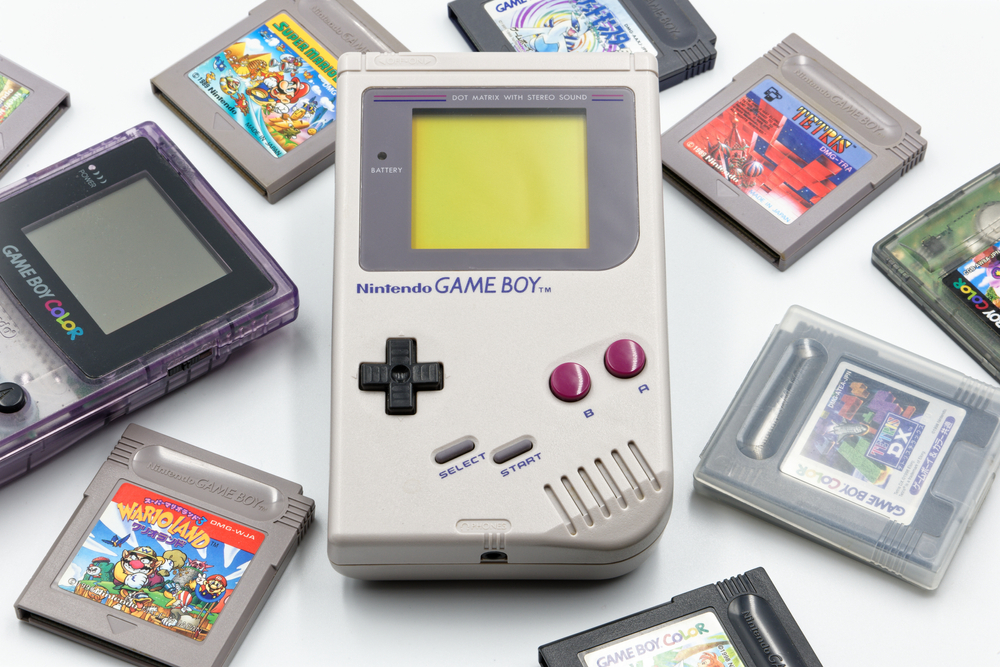Since the dawn of gaming, the ability to play your favorite titles on the go has been a desirable option for both gamers and developers alike. While it’s an area of the industry that a number of Japan’s gaming giants, such as Sega and Sony, have tried to muscle into over the years, only one company has managed to stand the test of time in the handheld gaming arena: Nintendo.
Setting the standard with the original Game Boy more than 30 years ago, Nintendo has continued to improve upon its handheld offerings, developing technology and titles that have kept gamers across the globe coming back with each new iteration. Here, we take a look at the evolution of the consoles that have cemented Nintendo as the household name in portable gaming.
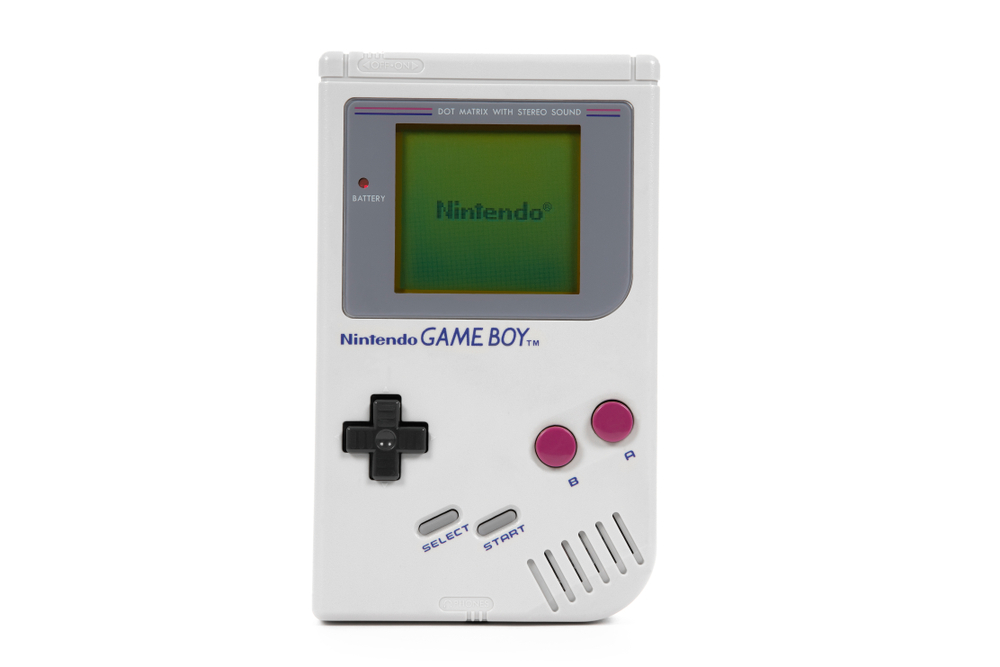
Photo by robtek via Shutterstock
Game Boy
Released in Japan on April 21, 1989, the Game Boy was where it all began for Nintendo in terms of handheld gaming. The brainchild of Gunpei Yokoi, one of Nintendo’s first video game designers, the Game Boy ran on AA batteries and played games on interchangeable cartridges which were displayed on a small, colorless screen.
Although not as advanced as similar consoles being released at the time, namely due to lacking a color screen, a lower price point and longer battery life saw the entire stock of 300,000 units sold within the first two weeks of release in Japan.
Consisting of just four buttons and a directional pad set within a thick plastic shell, the design was simple yet robust, making for a console that would go on to withstand years, even decades of use.
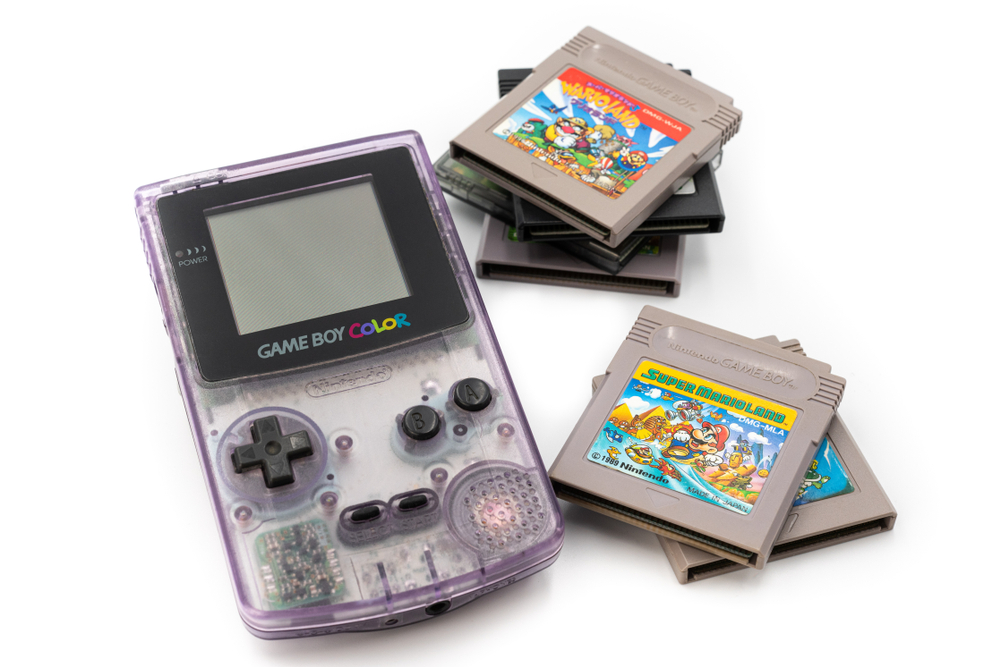
Photo by Matthieu Tuffet via Shutterstock
Game Boy Color
Taking the original Game Boy and improving upon it in every aspect, the Game Boy Color debuted in Japan in 1998 and sent waves through the industry, further solidifying Nintendo’s sales dominance at the time.
Maintaining the trademark Game Boy shape, the Game Boy Color was considerably thinner, came in a wide variety of colors and most notably, included Nintendo’s first handheld screen capable of displaying color.
Combined with the original Game Boy, the Game Boy Color went on to become the third highest selling console of all time, with over 118 million units sold worldwide.
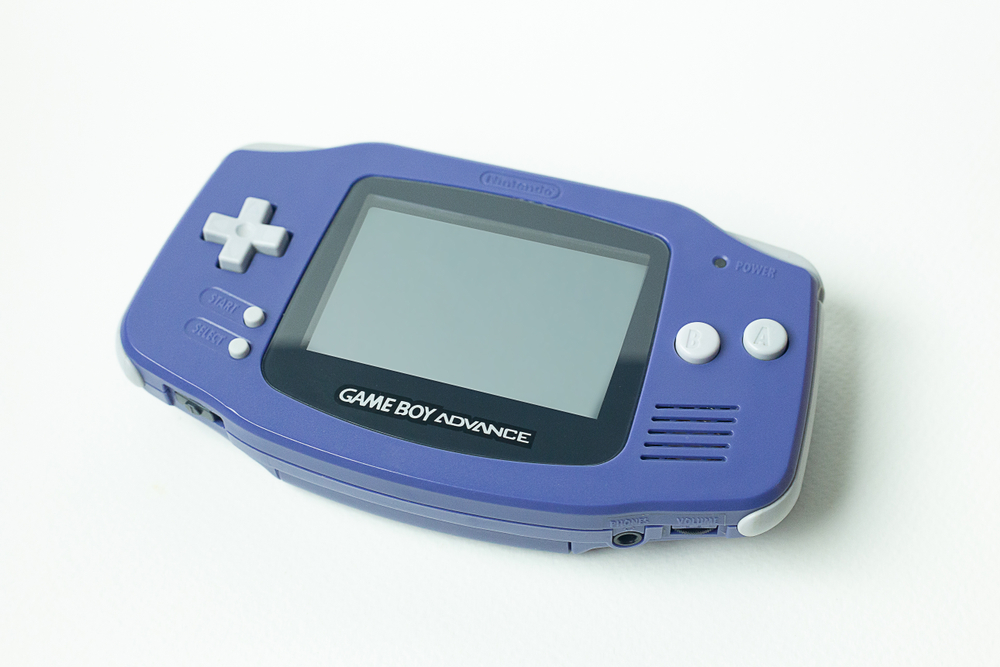
Photo by Niphon Subsri via Shutterstock
Game Boy Advance
It was in 2001 that gaming saw Nintendo’s first deviation from the famous Game Boy shape in the Game Boy Advance. With input from the Tokyo-based French designer Gwenael Nicolas, the console took on a more rounded landscape orientation, with the buttons on either side of the screen as opposed to below it.
Along with its fresh exterior, the Game Boy Advance offered a variety of new features. This included an extra two trigger buttons on top, a new style of gaming cartridge that was smaller than the previous Game Boy iterations, and more processing power, which allowed for the most visually striking games on a handheld Nintendo system to date. The inclusion of backward compatibility also meant that gamers could still play their original Game Boy games on the Advance. It eventually went on to sell over 81 million units.
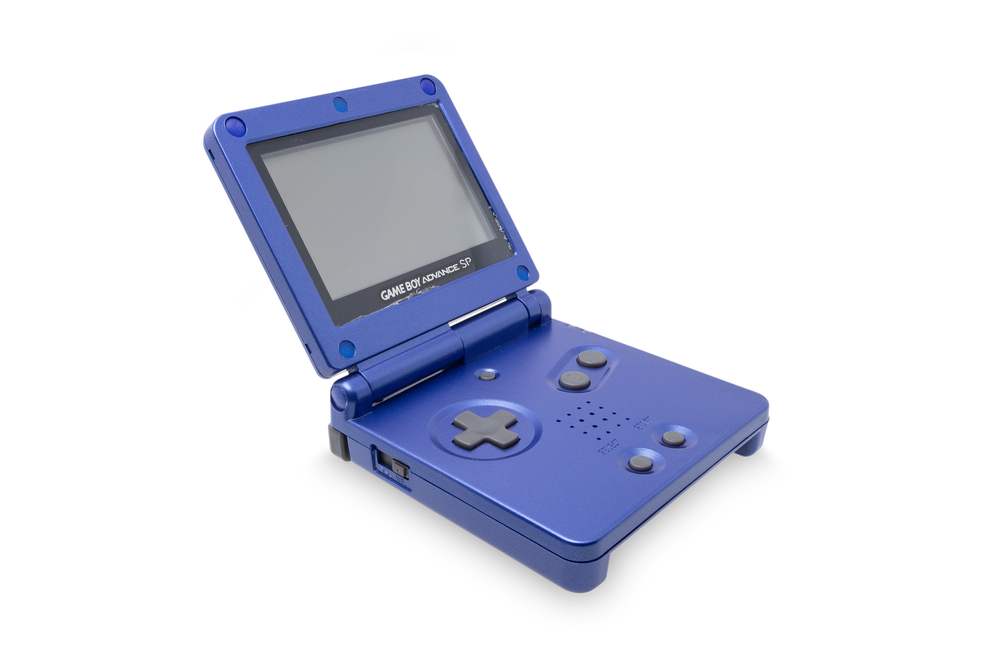
Photo by Tunarov via Shutterstock
Game Boy Advance SP
Released in 2003 and building upon the hardware of its predecessor, the Game Boy Advance SP (SP standing for “special”) was predominantly Nintendo taking the opportunity to improve upon two major pain points experienced by their customers: the constant replacing of batteries and a screen that was difficult to see in low light.
Encased in a new clamshell-style body that made for extra portability, the Game Boy Advance SP came with a rechargeable lithium battery and an internally front-lit screen that somewhat improved visibility, although this was soon updated.
Realizing that the display could be even further improved upon, in 2004 Nintendo released an updated version of the SP which included their first internationally available backlit screen within a handheld console.
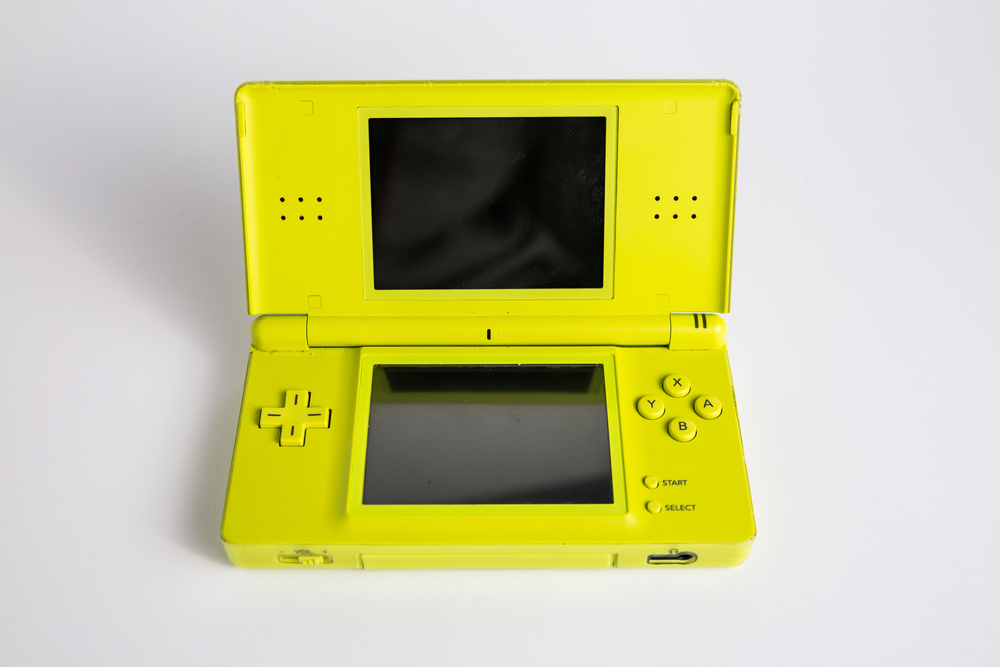
Photo by Joshua Sanderson Media via Shutterstock
Nintendo DS
Upon its release in 2004, the Nintendo DS (DS standing for dual screen) signified another extraordinary leap in handheld gaming technology.
Continuing with the clamshell design of the previous Game Boy Advance SP, the Nintendo DS now incorporated two screens, the bottom of which was a touch screen. This second screen added an entirely new dimension to gaming, given that both screens could be used in tandem.
On top of this, where previous Game Boy iterations had to be physically connected by cable for multiplayer gaming, the Nintendo DS allowed players to connect wirelessly over a short distance, or even online via the internet.
Originally designed to complement the existing family of Nintendo consoles, the inclusion of backward compatibility and overwhelming sales numbers saw the Nintendo DS ultimately become the successor to the Game Boy series. It then went on to become the most successful handheld gaming console of all time, selling over 150 million units across its various models.
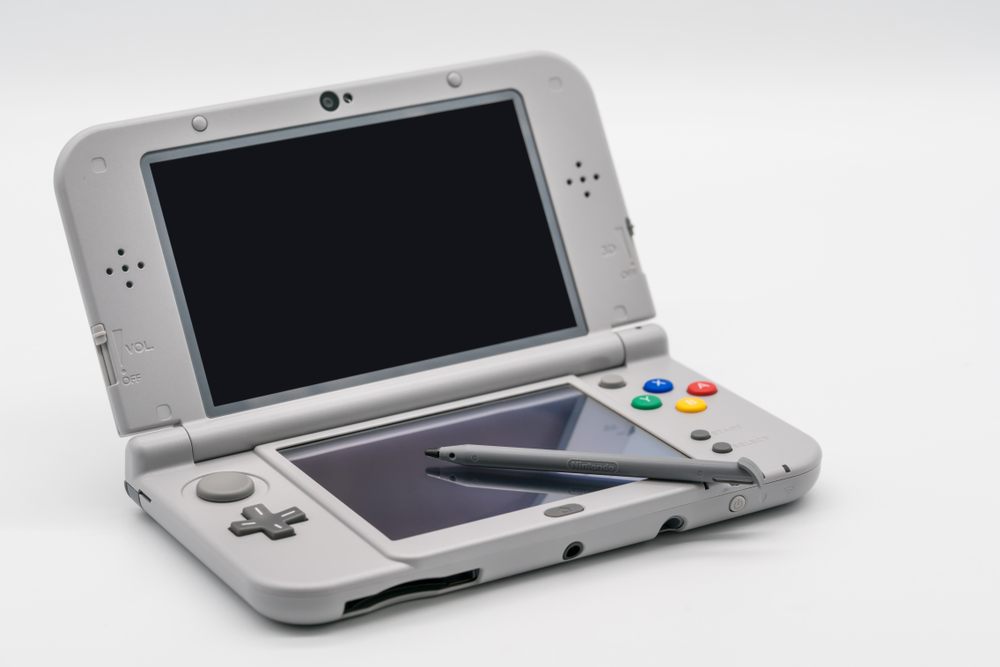
Photo by v74 via Shutterstock
Nintendo 3DS
Designed to improve upon the wildly popular DS, the Nintendo 3DS was released in 2011. To Nintendo’s disappointment, however, it was not as popular as the company had hoped.
Although boasting improved hardware, new games and even the ability to display stereoscopic images, which gave games a three-dimensional appearance without the use of glasses, the 3DS was not as well received as its predecessor. While there are various potential reasons for the lackluster reception, a lack of overall difference to the DS and the underutilization of the 3D technology by game developers is often cited as the cause.
This apparent misstep caused Nintendo to drastically reduce the price of the console less than 6 months after its release, while also offering free games to customers that paid the original launch price. The strategy worked. While profit margins were thinned as a result, the Nintendo 3DS family of consoles went on to sell over 75 million units worldwide.
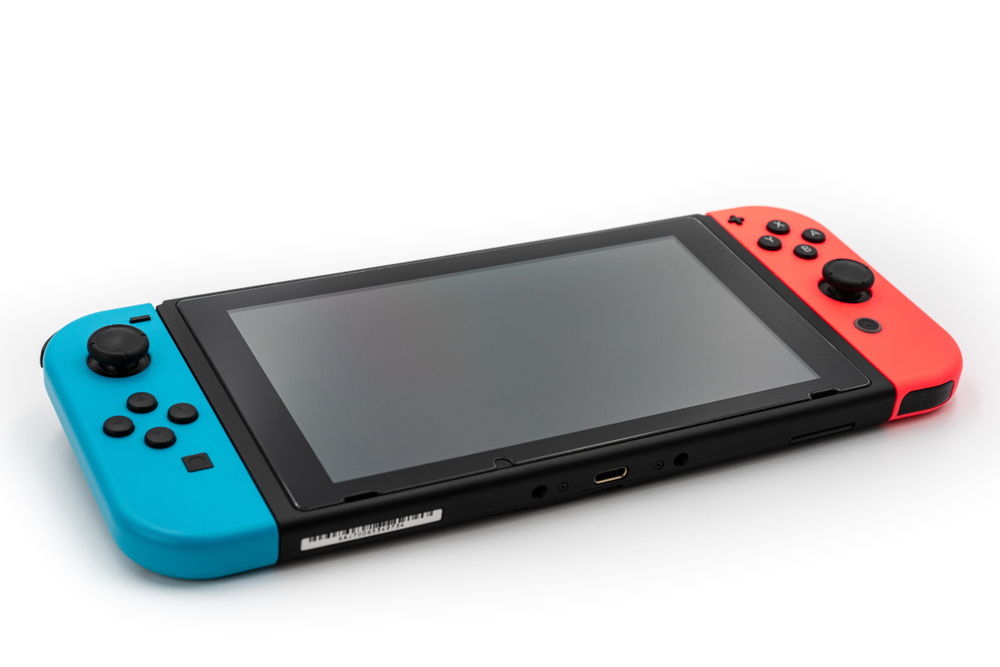
Photo by Matthieu Tuffet via Shutterstock
Nintendo Switch
Not a company to make the same mistake twice, Nintendo’s most recent handheld offering, the Nintendo Switch, exceeded all expectations upon its 2017 release.
Returning to a single, yet much larger screen, the Switch was designed to appeal to a wider audience through its multiple options of use. For lovers of the handheld gaming experience, the console’s weighty, rounded design made on-the-go gaming easy and enjoyable. While for those used to gaming on a home console, the Switch could also be played on a television via an accompanying docking system.
This design, along with a plethora of cutting-edge titles in beloved series such as Pokémon and Super Mario, made the Switch popular amongst both seasoned and casual gamers alike.
Today, the Nintendo Switch is the fifth most popular gaming console of all time, having sold just over 111 million units worldwide.
The Future at Your Fingertips
Looking back on the development of Nintendo’s handheld gaming offerings, it’s nearly impossible to imagine what the future holds. Those who owned the original Game Boy could never have envisioned something like the Switch ever coming into existence, which is exactly what makes the space so exciting. No one knows where it ends.
As for what comes next, we can only wait and see, fingers and thumbs at the ready.

